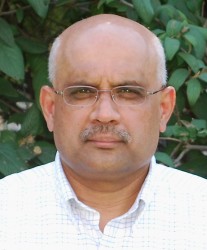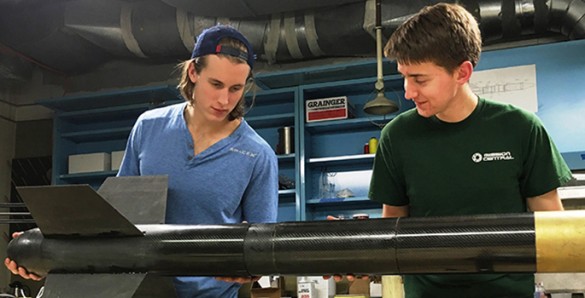The Vanderbilt Aerospace Design Lab is off to a strong start defending their national rocketry title in the 2015-16 NASA University Student Launch Challenge competing against a field of 39 other university teams.
On Nov. 14 the student team successfully launched a subscale model of this year’s rocket design and they also kicked off a slick new website. The team has won the championship three times.

The student launch competition is a NASA-conducted and aerospace-industry-evaluated engineering design challenge built around a NASA mission. It is an intense eight-month contest involving payload and rocket designs, project reports and design reviews, outreach activities and website design, followed by a grand finale launch in April.
Each year NASA varies the mission. This year’s challenge is to design rockets that can fly up to an altitude of 5280 feet and carry a scientific payload that supports the development of the Space Launch System, the most powerful rocket NASA has ever built.
The Vanderbilt team, which is known for its innovative payloads, has chosen a high-pressure monopropellant thruster for this year’s payload.
“The biggest challenge to successfully running a liquid-fueled engine like this in low altitude rocket flight is fuel delivery,” said faculty advisor Amrutur Anilkumar, professor of the practice of aerospace and mechanical engineering. “Monopropellant thrusters have been used on spacecraft. However, the free fall conditions there are less stringent than the -2g encountered in low altitude rocket flight. As a result, fuel containment requires a great deal of ingenuity. We are building everything from scratch, including both the thruster itself and a specialized ground-based test facility.”
The liquid fuel that they are using for their payload motor is hydrogen peroxide. Serendipitously, Professor of Mechanical Engineering Michael Goldfarb used hydrogen peroxide to power actuators for a bionic arm that he developed several years ago. In the process he discovered a catalyst that allowed his actuators to work at room temperature. “We are very fortunate to borrow from his work and are using it in our thruster design,” said Anilkumar.

In their initial design, the team had bolted their hydrogen peroxide thrusters on external pylons outside the rocket. However, they found that this produced too much aerodynamic drag and increased side-wind buffeting. So they designed a bulbous tail cone and hid the thrusters inside: The tail cone has a large central channel for the exhaust from the primary, solid fuel rocket flanked by two smaller channels for the exhaust of the hydrogen peroxide thrusters.
In this year’s design, the monopropellant system doesn’t produce a large amount of thrust. Instead, its primary purpose is to demonstrate that it can deliver a steady supply of fuel to the thrusters while the main rocket motor is firing and when the motor cuts off and the rocket goes into free fall. Once the team has demonstrated that the fuel system is reliable then they will consider building more powerful versions.
This year’s rocket team is made up of three student groups: a core mechanical engineering senior design team that is fabricating the payloads and the rocket, a group of lower classmen who assist in field and outreach activities and a group of graduate students who are engaged in advanced research and background work.

The 17-team members are student launch president Andrew Voss, Robb Rutherford, Matt Kelley, Rebecca Riley, Mich Masia, David Hirsch, Henry Bristol, Justin Brougton, Peer Orme, Andrew Martin, Quinlan Monk, Dylan Shane, Dexter Watkins, Ben Gasser, Derek Phillips, Chris Lyne and Chris Romanoski.
“There is a rejuvenated interest in space exploration facilitated by private access to space. NASA is helping generate the next generation of space engineers through the NASA SL challenge,” said Anilkumar. “Both graduate and undergraduate students have found this eight-month rapid-fire innovation-based design cycle extremely challenging. It is an experience that can serve as a stepping stone to a career in the aerospace industry.”